Espagne
now browsing by tag
Somiedo National Park and Picos de Europa
After traveling along the coast of Asturias, we head South to discover the Somiedo National Park, in the “valley of lakes”.
1. Houses and granaries typical of this region.

2. After spending a night in a small mountain campground in Valle de Lago, we set off on a lovely hike up the valley, towards the lakes. Along our walk, a beautiful wild iris.
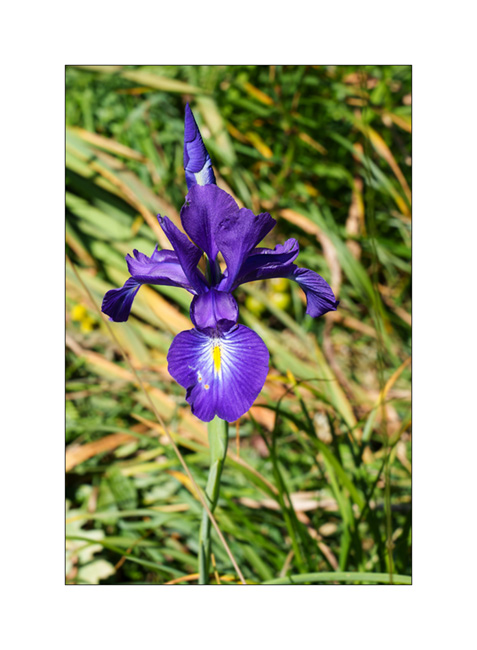
3. Arrival at the lake.
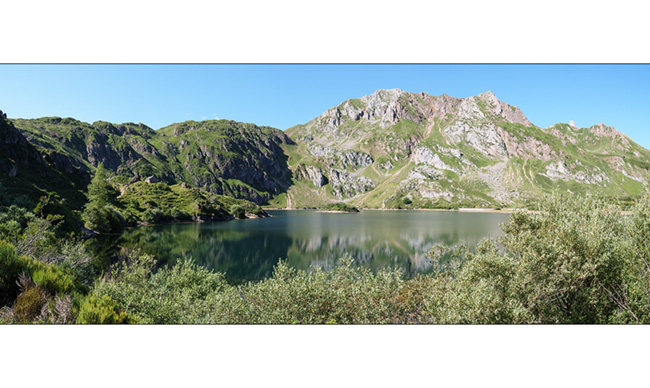
4. Alpine pasture near the lake. We are only at 5,250 feet elevation but already at the tree line.
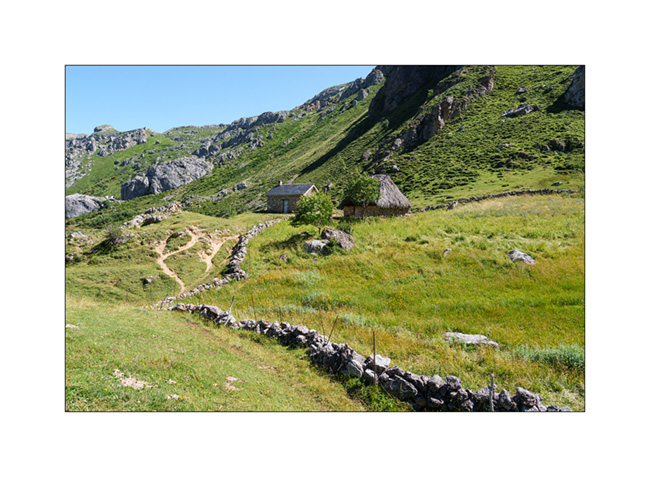
5. Picnic.

6. Lake plants.

7. Along the return hike.

The next day, we hit the road again to go to the lakes of Covadonga. We sleep in a parking lot under the sanctuary. The next morning, we discover that the road leading to the lakes is closed to private vehicles during summer. We park and go to buy tickets for the shuttle; arriving at 8:15 am at the gatehouse, the employee tells me with a large smile: “The next availability is at 4 pm”… It’s a bit of a cold shower! From then on, we give up and go to discover the Sanctuary of Our Lady of Covadonga.
8. Chapel on the cliff, next to the Virgin.

9. Kneeling pilgrims praying in front of the Holy Virgin.
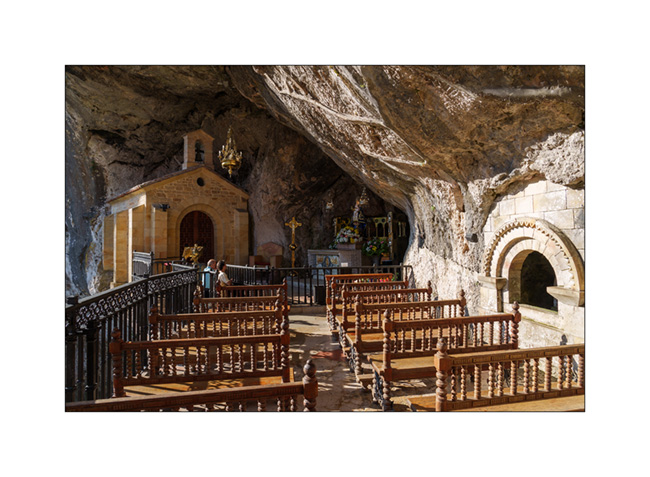
10. The Basilica of Santa Maria la Real de Covalonga.

11. Crypt under the basilica.

After this visit, we decide to go and discover the Picos de Europa, magnificent limestone mountain range set back from the coast a little further east, and more particularly the Gorge of Cáres.
12. Stop on the road at Mirador del Pozo which offers a magnificent view of the mountain range.
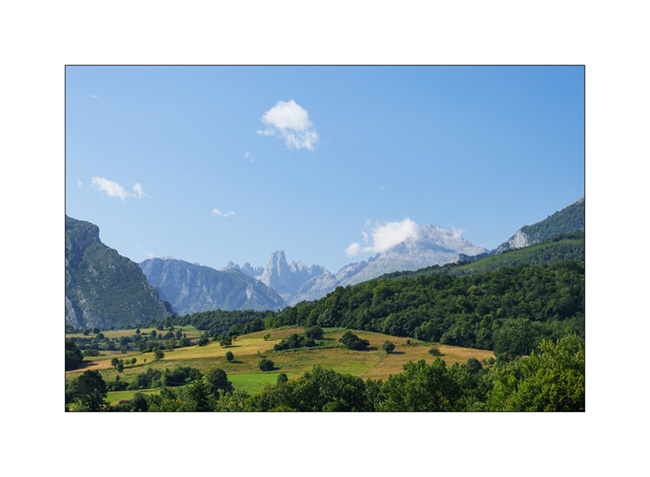
But arriving at the Viesgo crossroads, the road is also blocked because there are too many people. Traveling in the middle of summer is sometimes frustrating!
Emile spots a funicular that goes up to Bulnes, apparently a small mountain village. We go back down the road for 1.5 mile to find a place to park, take the picnic, walk the 45 mintues to the departure station. There is an hour and a half wait but as it’s noon, I buy the tickets and we go to picnic on the banks of the Rio Cáres.
13. Arriving at the top of the funicular, the place turns out to be a real tourist trap! After barely 10 minutes of walking, we arrive in a former summer mountain village which has been completely transformed into a series of crowded tourist restaurants. After only 15 minutes, we have gone around and realize that there is nothing to see there except a small mountain chapel. We can’t even go in as it’s locked.
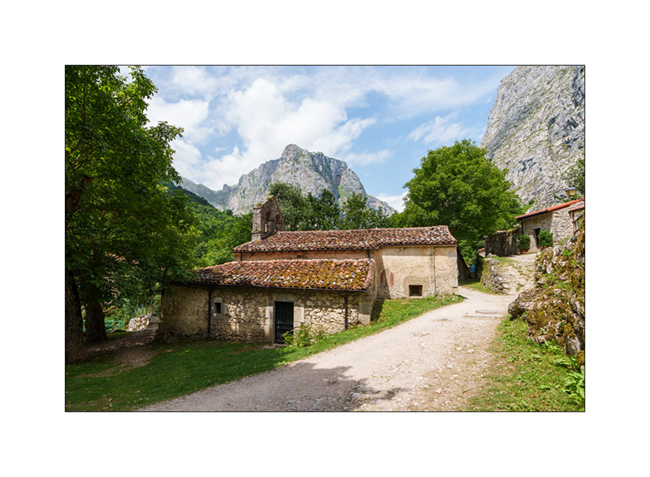
Back at the upper station of the funicular, we have to wait one and a half hour to be allowed to go back down and we reach VivaLaVida after 4pm. I then decide to go up the East fork of the valley, towards Sotres where I have spotted a high-altitude track. You will discover it in the next article! 😉
Cantabrian coast and Asturias
So we continue the discovery of the coast now in Cantabria. We had already stopped near Santander last year and we go to discover another spectacular coastal spot very close by.
1. Arrival on site.

2. Laminated rock characteristic of the region.

3. Variant.

4. A few hundred yards further.
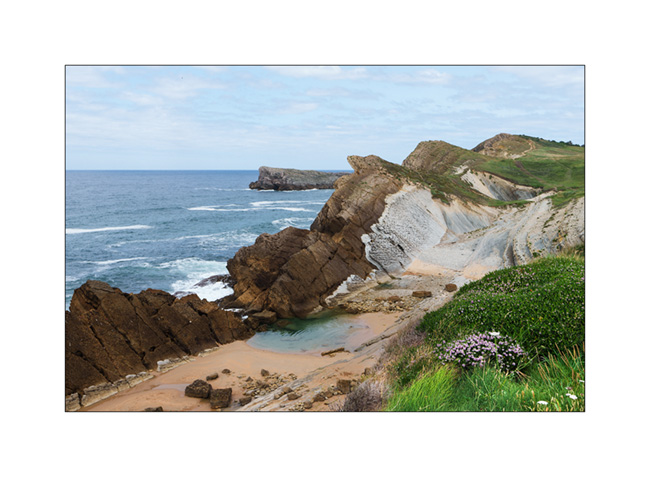
5. Other composition.

6. The tide rises and creeps through the rock wall.

7. Natural pool.

8. Nice late afternoon near San Vicente de Barquera.
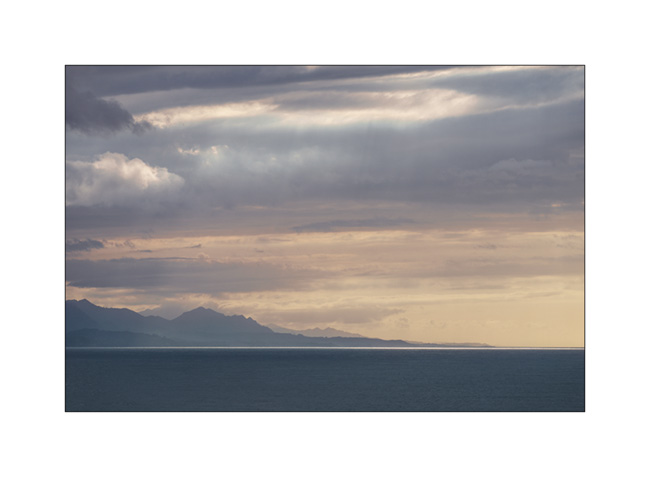
9. Rays…

10. Sunset.

11.
61 / 5 000
The next day, a little further, we discover another spot.
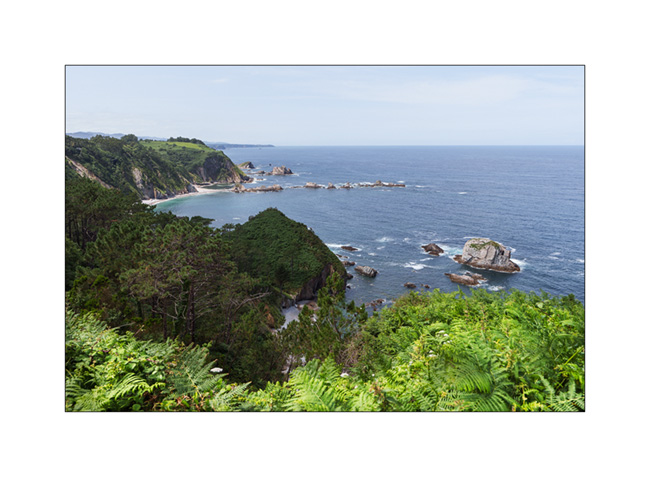
12. The Playa del Silencio.

13. This coastline full of cliffs is truly beautiful.
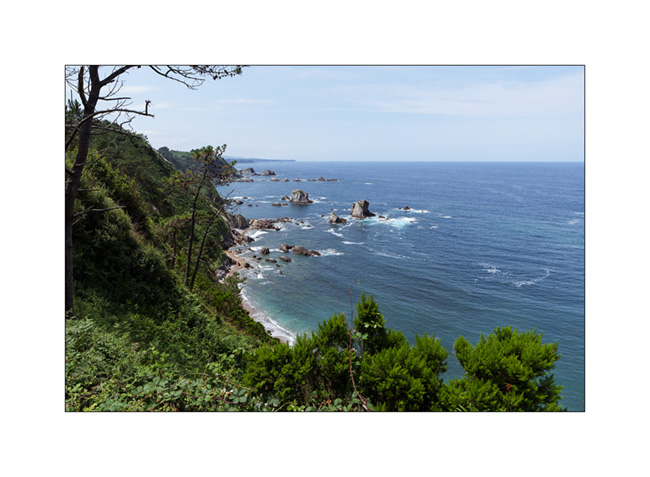
14. We continue to the Asturias-Galicia border to discover a spectacular spot the next day and find a quiet place to sleep by the ocean.

15. Last glimmers of a colorful sunset.

We will show you the Praia de las Catedrais in the next update. 😉
Spanish Basque country
Wanting to discover the Guggenheim Museum building in Bilbao, we drive along the Basque coast.
1. Stop in Ondarroa to discover this pretty little coastal town.
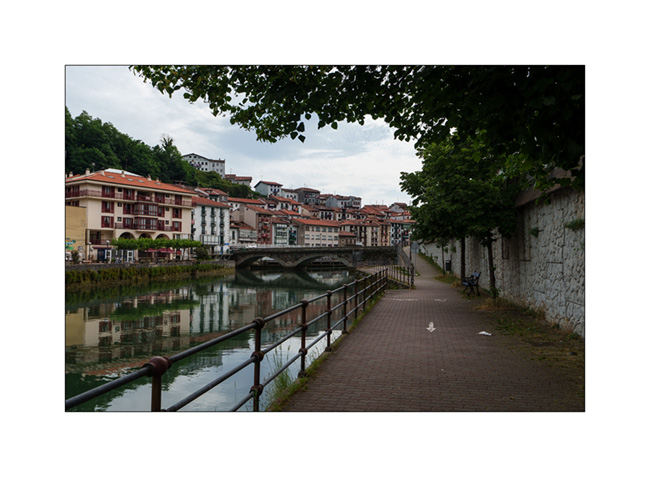
2. Its marina at the mouth of the river.

3. Back street…

4. Intrigued by the noise, we discover a group playing Basque pelota on a concha (field) .
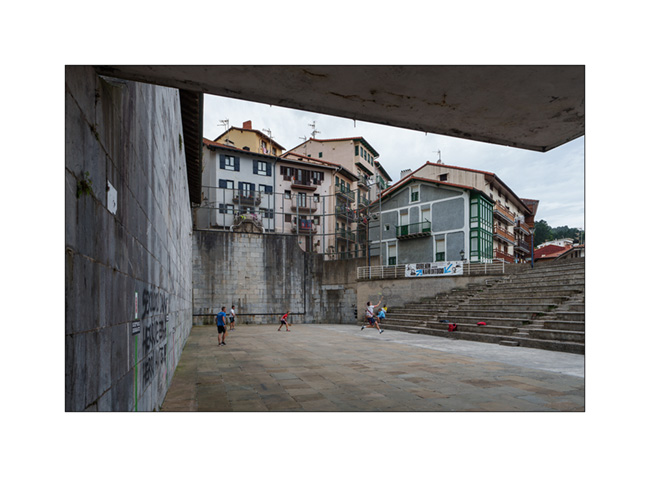
5. Return to VLV via the fish auction, empty this morning…

6. The same auction from the outside. It is built on a quay, right in the city.

After a one-hour stop to repair the VLV headlights that no longer work – one contact of a plug, corroded, broke – we arrive in Bilbao shortly after noon. After parking not without difficulty – it’s not easy to find a space large enough – we eat in VivaLaVida and then go discover the famous building of the Guggenheim Museum.
7. The city of Bilbao combines the old and the new.

8. We discover the Guggenheim from the opposite bank.
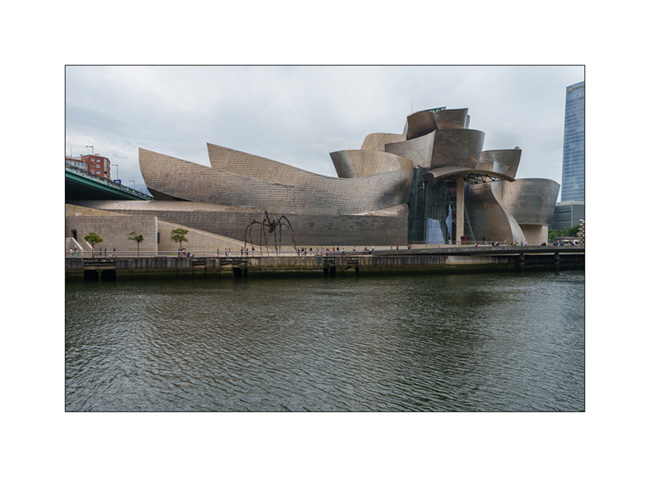
9. What an architecture!
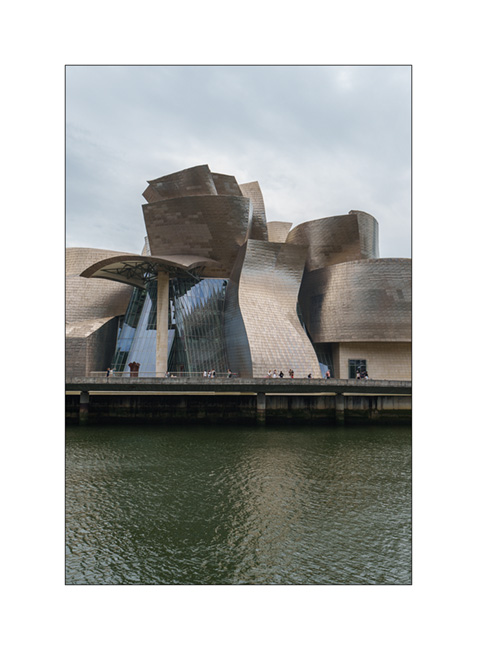
10. Spectacular!

11. Contrast of the sculpture all in curves…
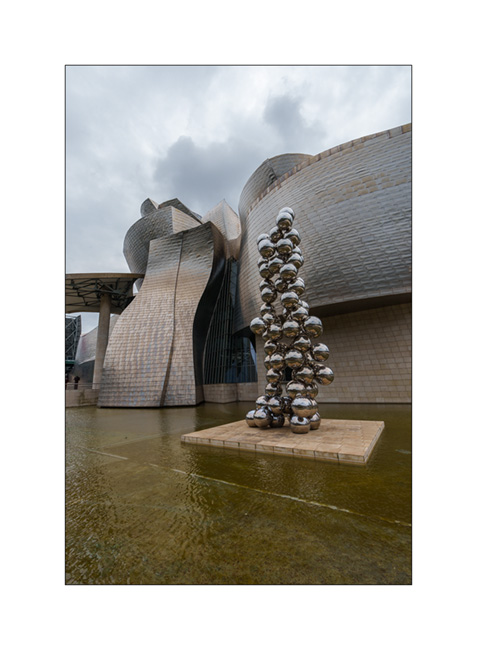
12. Water…

13. Nothing is strait!

14. Curves…

15. Entrance to the museum which we’re not going to, the current exhibition not being suitable for children.
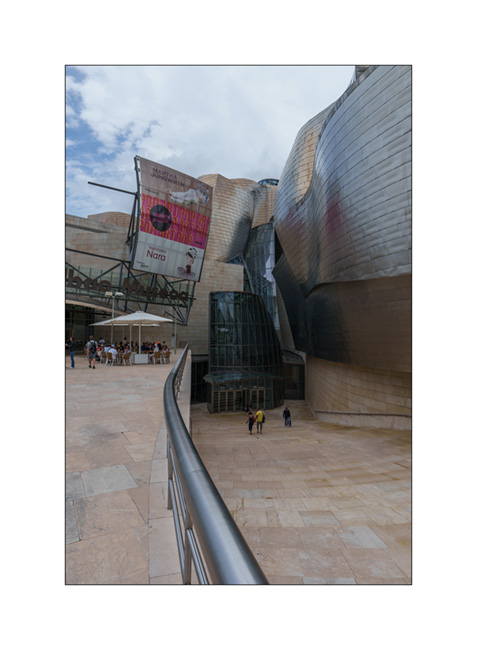
16. Still curves…
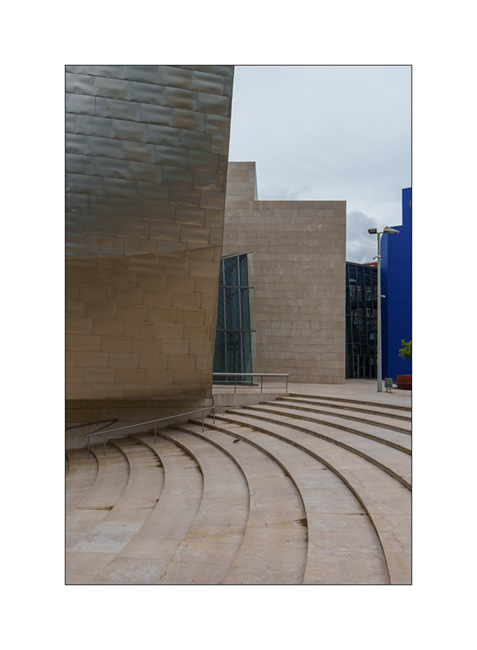
17. The part of the building that houses the administration.

18. Plaza.

19. After searching in vain for a place to sleep by the ocean, we finally find it in the hills back from the coast, right next to a real menhir.
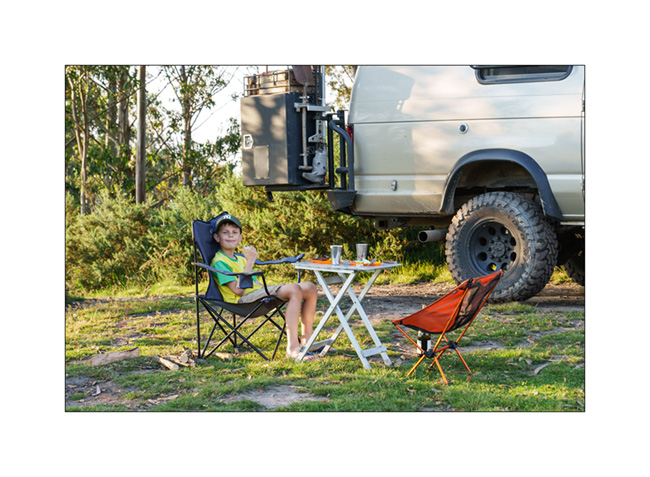
20. It’s Euro soccer final night and Emile doesn’t want to miss it! On my side, I’m enjoying the sunset…
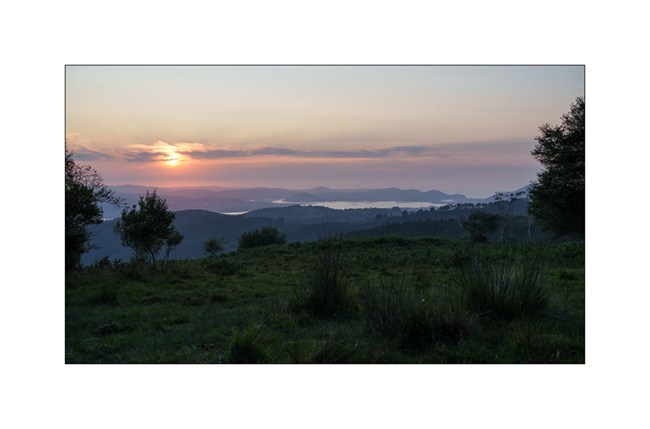
More to come very soon as we continue our progress towards the west.
Cantabria and Basque Country (continued)
The next morning, we continue to discover this rocky coast.
1. The ocean passes through the limestone crevices to create this small lake about three hundred feet from the coast. The swell makes the water move, a rather unusual effect!
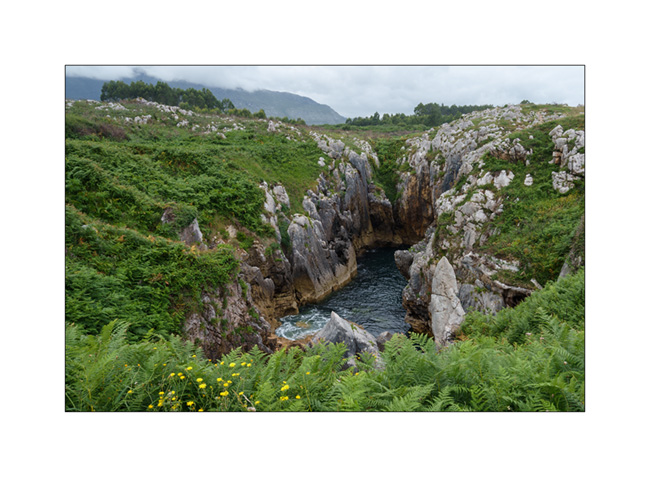
2. Another arch.
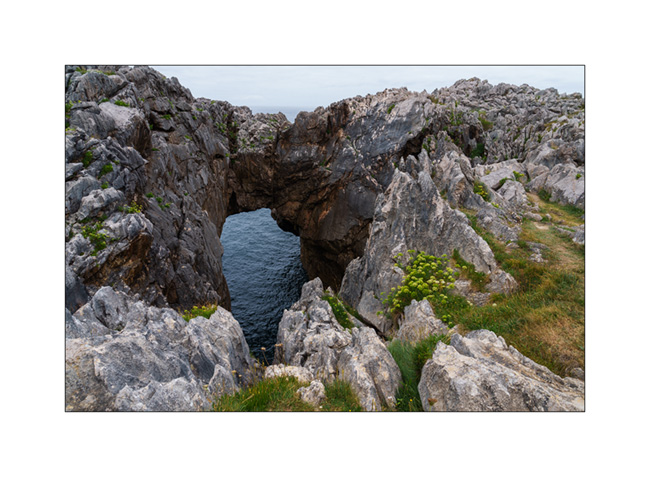
3. The coast towards West from a small peninsula.
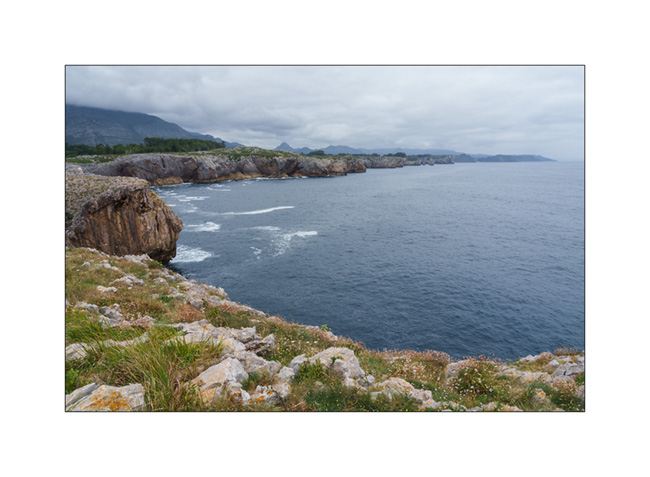
4. And one more arch.
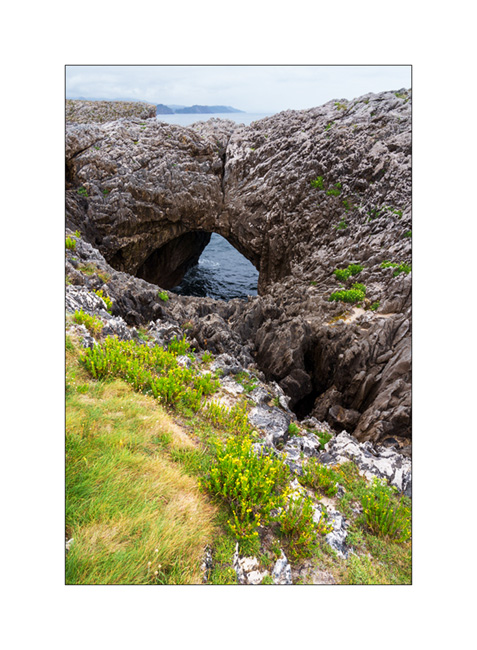
5. There are only a few days left before the end of the vacation, we are heading back east. Abandoned farm along the road…
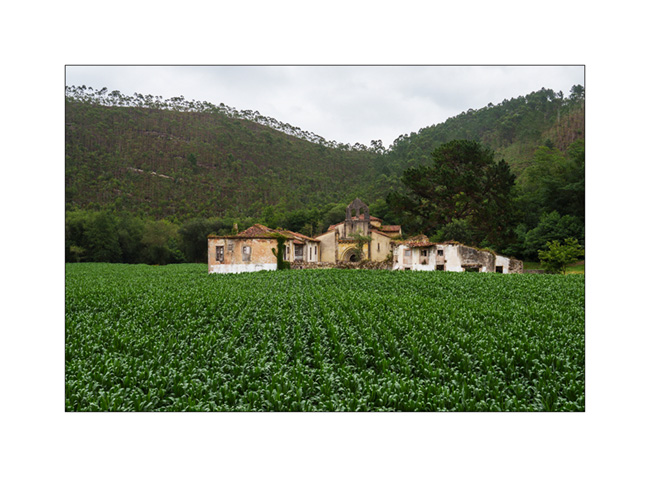
6. Church near the village of Niembru.

7. We sleep on a surf spot near San Vincente de la Barquera, with beautiful colors at sunset.
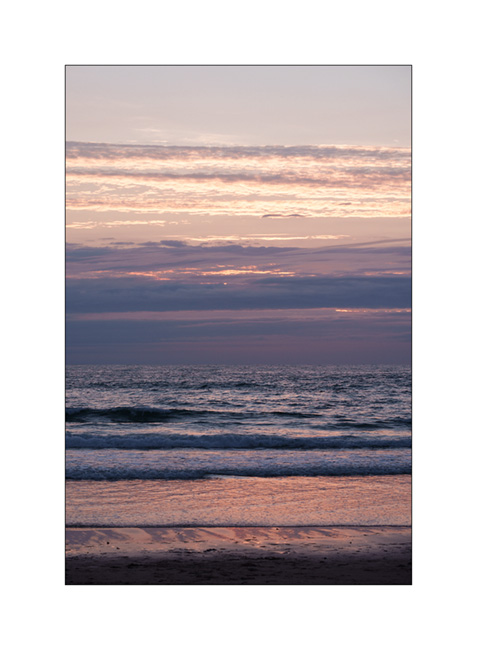
8. …

9. …
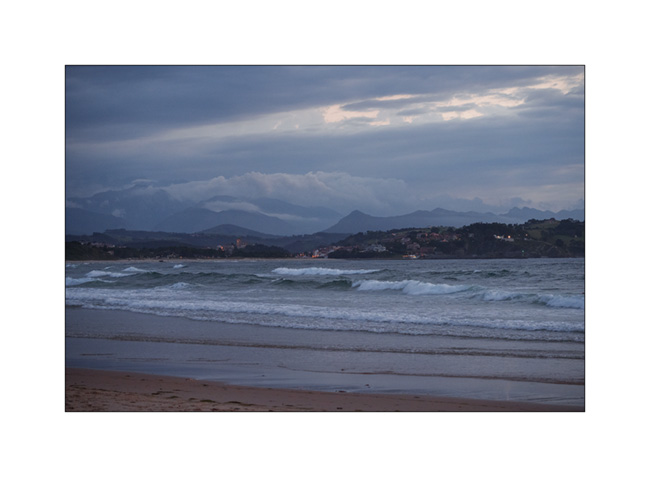
10. VivaLaVida among surfer campers.

11. First light at dawn…

12. We continue our route in the Basque Country and make a short stop at the Hermitage of San Juan de Gaztelugatxe. It’s so crowded that it’s not possible for us to go down because all tickets for the day have been sold.
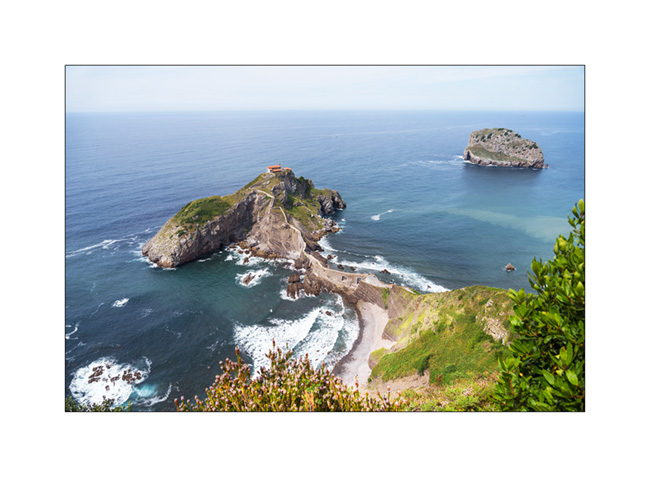
13. Church with covered passageways…

14. Main door.
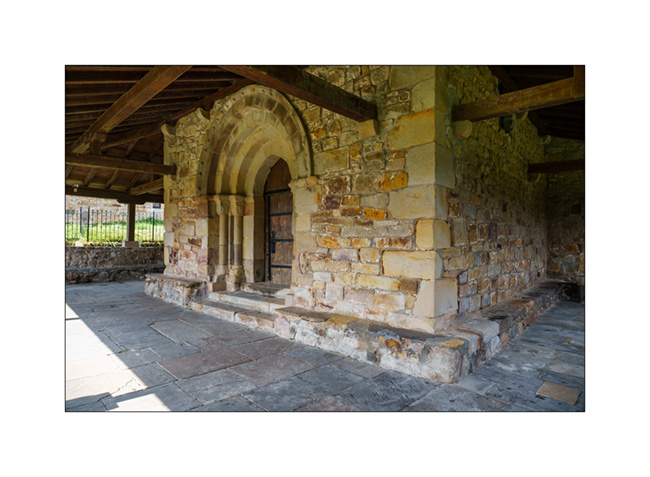
15. Another known spot where we find these layered rocks which have tilted to offer their slices to the ocean, in Zumaia. You don’t see it ont the picture but to my left, there is a beach with probably an average of 1 human per square feet! 😀
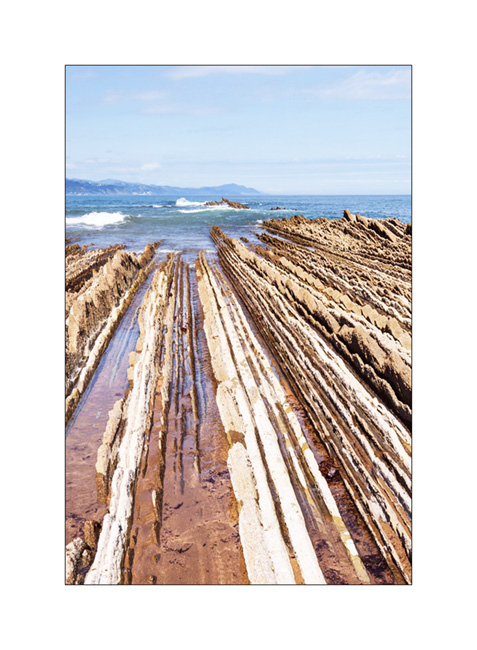
16. My son in discovery mode.
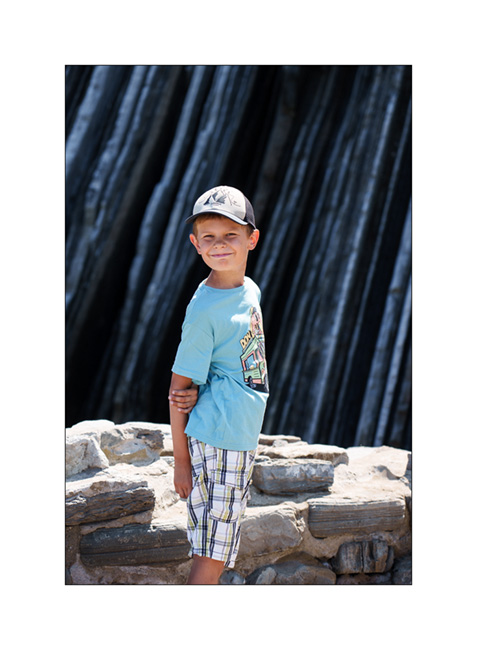
17. Layered cliff…

I will still have one last update to publish in a few days to close the story of this summer trip… See you soon! 😉
Navarre and Basque Country…
1. As we continue our progress towards the West…
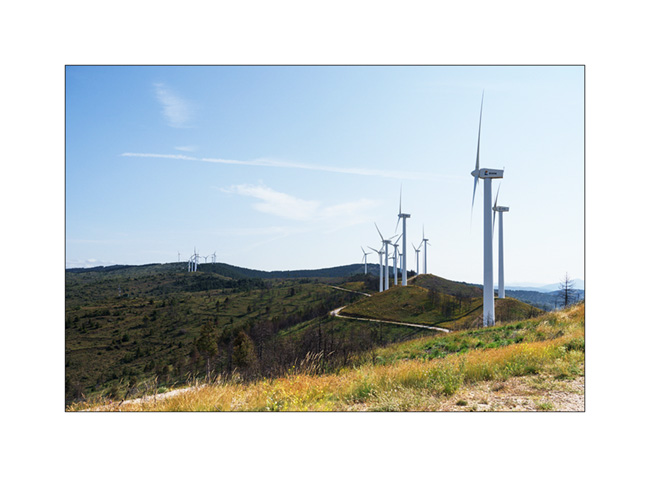
2. … we take a short break in a wind farm.
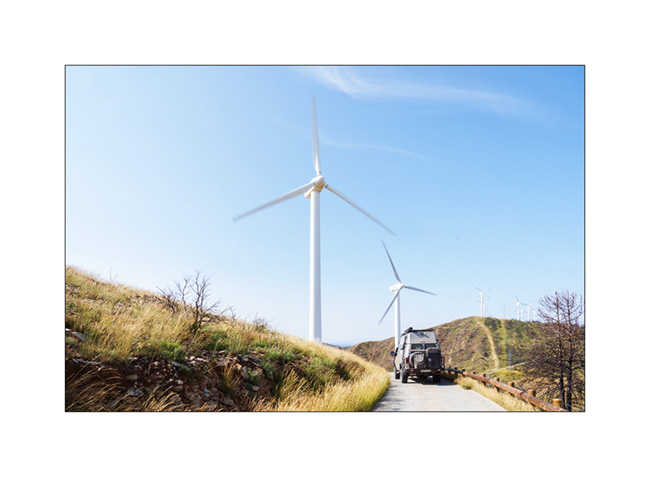
3. Around midday, we reach Urbasa Natural Park, a gorgeous karst plateau between 2,400 and 3,000 feet above sea level.
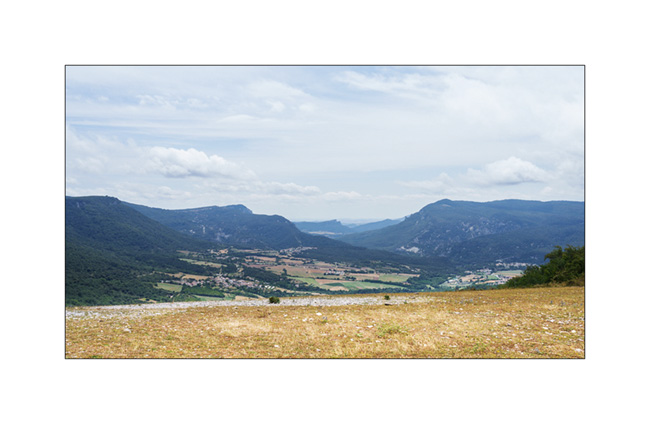
4. After lunch, we go for a walk there.

5. Cliffs…

6. Distorted silhouette…
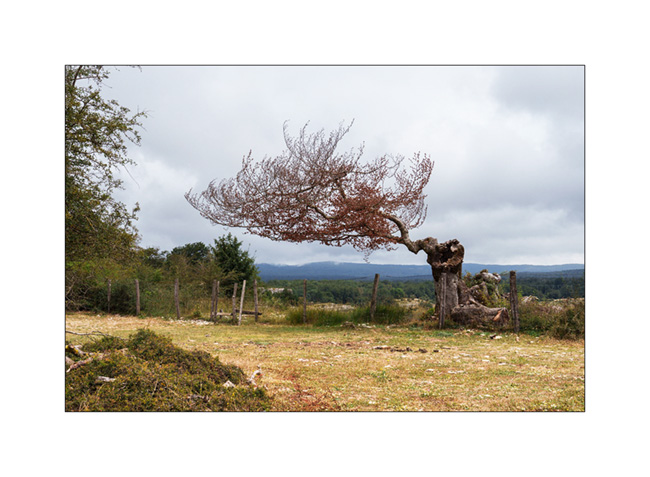
7. Beautiful blue thistles dot these high pastures.
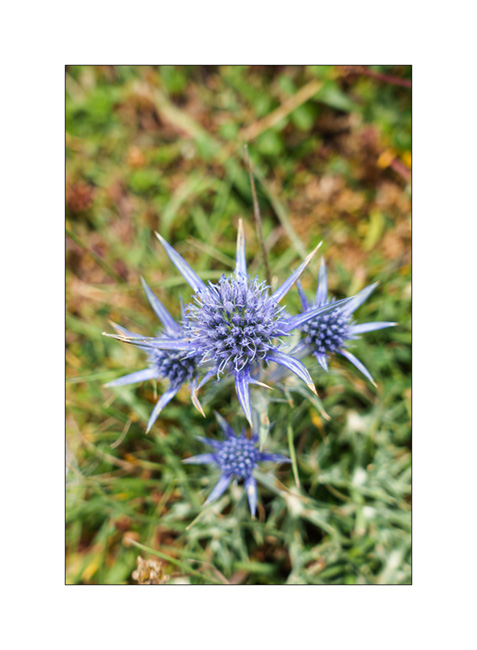
8. Dense forest at the Northwest end of the plateau…

9. …
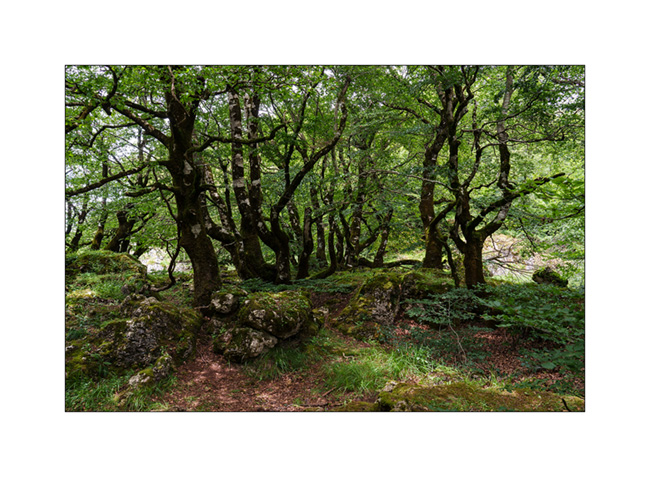
We then head Southeast of Bilbao in search of a natural arch, the Oyo de Aizulo, in the Basque Country.
10. After a walk in a light rain, we arrive at the entrance of this magnificent double arch.
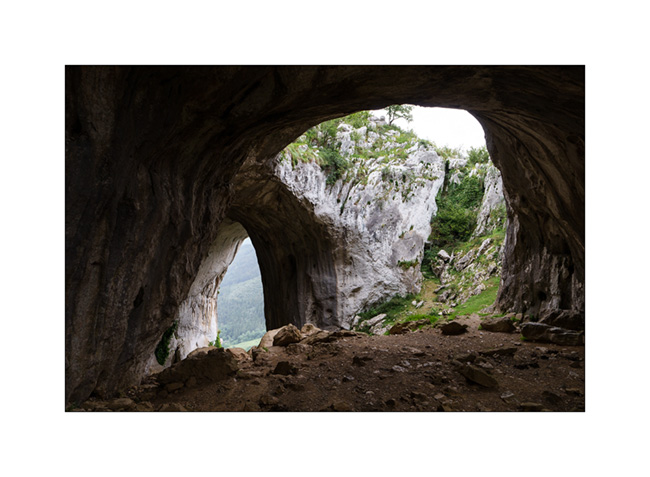
11. Its dimensions are quite impressive! Here the lower arch, probably around ninety feet high.

12. And there the upper arch through which you access the site.

13. The same from above.
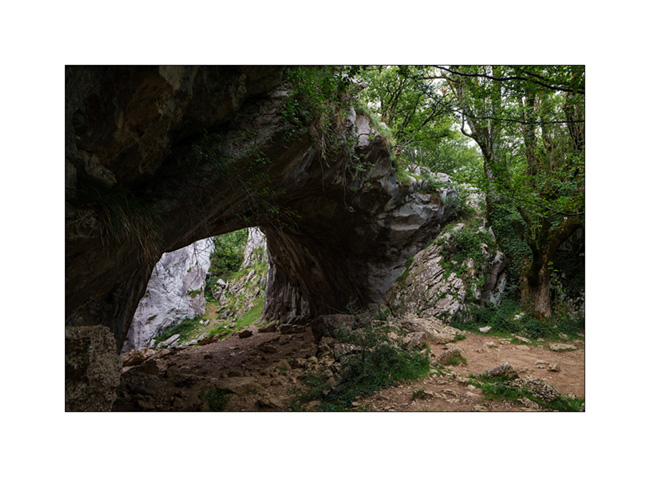
14. Selfie ! 😉
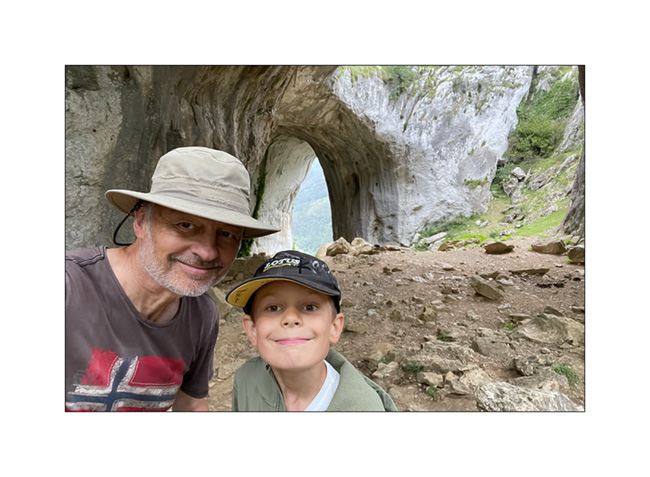
15. The next day, after the rain stopped, we go discover an impressive waterfall, the Salto del Nervion which, with its 666 feet, is the highest waterfall in the entire Iberian Peninsula.
As a gate now prohibits access to the trail, it’s after an approx. 2 hours hike that we reach the site to discover a completely dry waterfall! Too bad, it must be quite impressive when the Nervion flows there.

The next post will be more “oceanic” with the arrival of VivaLaVida in the Bay of Biscay… 😉
Pyrenees: heat and geology…
1. After a quiet night at 8,600 feet above sea level, the good weather is in the game.

2. We take the trail again for the descent.

3. We head West through the southern foothills of the Pyrenees, sometimes on small roads, sometimes on trails, discovering pretty villages…
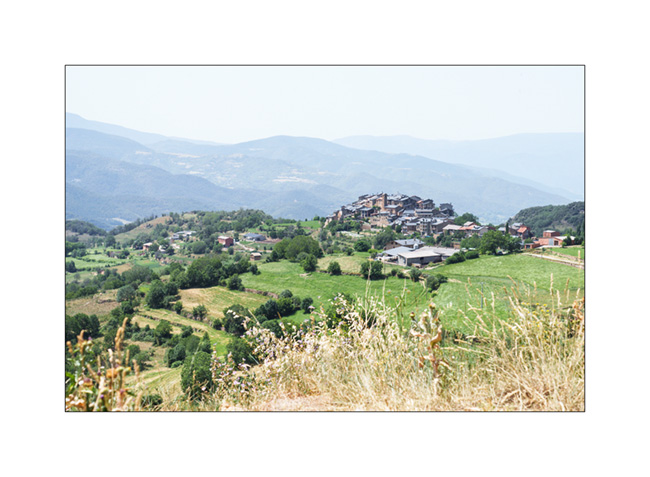
4. It is the hottest day with 110°F in the shade. We camp under the trees, near a river and take advantage of the new VLV shower installed before departure to refresh ourselves. A flock of sheep comes to drink right next to us.

5. The next day, we leave early to avoid the high temperatures. Panorama from Coll de Boixols.

6. And still these beautiful villages…

7. We arrive near the Congost de Mont Rebei, a deep canyon of the Noguera Ribagorçana river in which a vertiginous path has been dug. Parking is prohibited to vehicles over 6 feet high and we have to park along of the access road, 1.5 miles from the trailhead. View to the south from the “Mirador de les Lludrigues”.

8. Despite of the 104°F, we leave for the 4 miles leading to the beginning of the path dug in the cliff. Emile crossing a pedestrian suspension bridge.

9. Gradually, the trail rises as you enter the gorge.

10. In the heart of the canyon, the path is aerial !
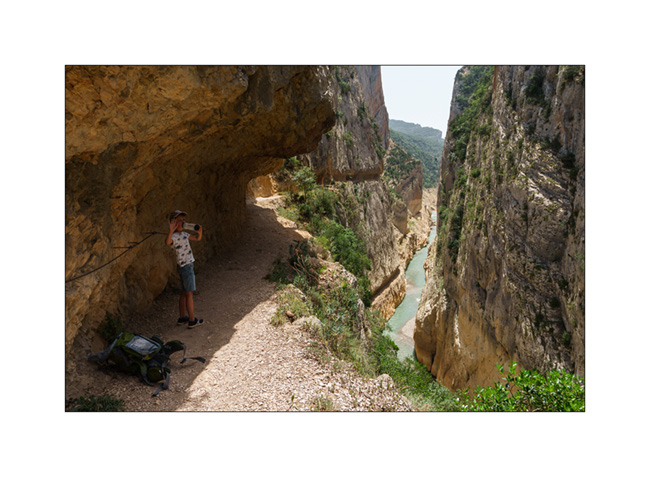
11. Congost de Mont-Rebei in its upper part. The path is 400 feet above the river!
A gust appropriates Emile’s cap; we therefore improvise a headgear for the way back with a small cloth and a lace because the sun always beats down hard!

12. Back to VivaLaVida after 4 hours of hiking under 105°F, we take the road again, then a trail to get to the Muralla de Finestras. We get there in late afternoon as the sun starts to go down…
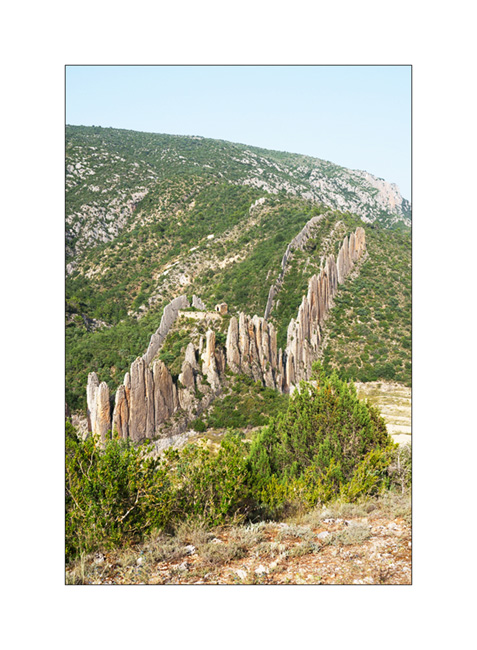
13. The level of the artificial lake which sometimes bathes the foot of this wall is very low this year…

14. From the ghost village at the end of the trail, we hike to the small hermitage of San Marcos which offers a nice viewpoint.
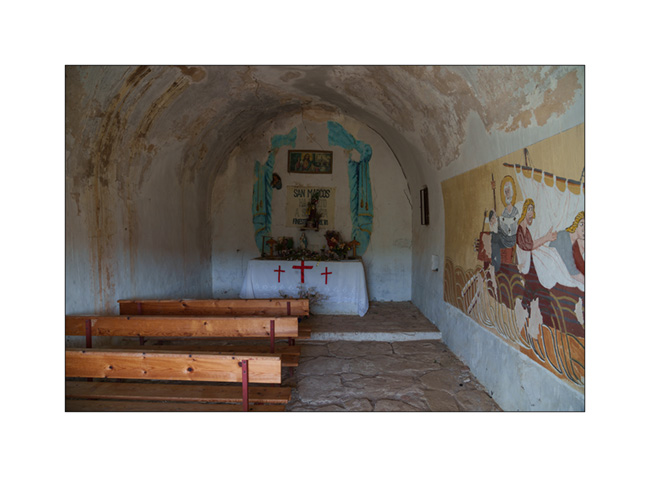
15. A last look at this geological curiosity before going back and finding a nice spot to sleep in the middle of nature and enjoying a shower…
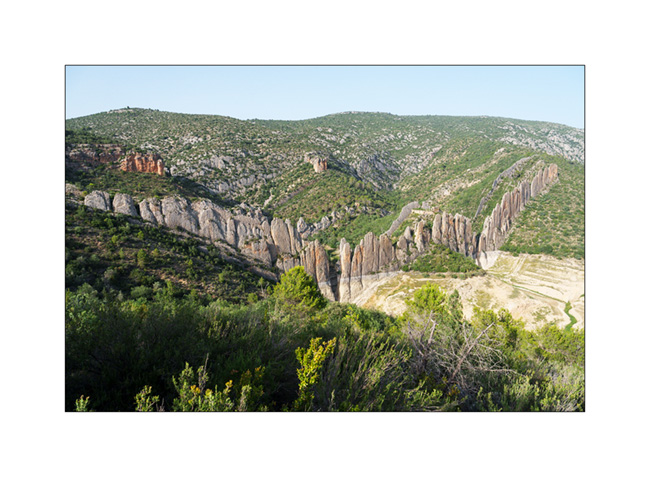
To be followed in a few days…
2023 Holidays, here we go!
After a spring somewhat upset by Emile’s diagnosis, it was not until July that VivaLaVida left its winter quarters to resume service.
Three days for a big engine, transmission and running gear service – thanks to the Garage BN in St-Martin/FR for the loan of the place – two additional days to reload all the stuff and we’re ready to leave towards South on July 15th. Emile is in heaven, he who has been asking me for two months “When are we going to travel again in VivaLaVida?!”. After a first night in the campground where we had waited for the wheel studs two years ago – Emile was hoping to see Lilou again, a little girl he met during our last stay – we continue towards the Pyrenees.
1. First spot that we are gonna discover, the “Fontaine des Amours” (Fountain of Loves), a pretty natural pool.
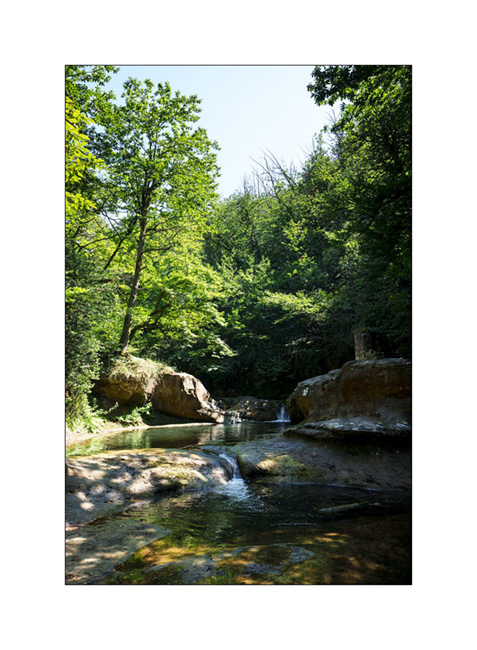
2. Not very far, we explore the remains of a Roman bridge…

3. It was rebuilt identically after a major flood thirty years ago.
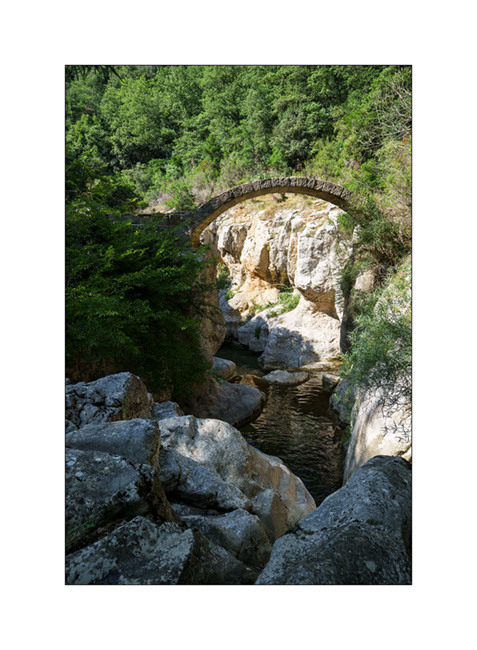
4. We find a quiet boondocking place not far to spend the night in the hills of Ariège…
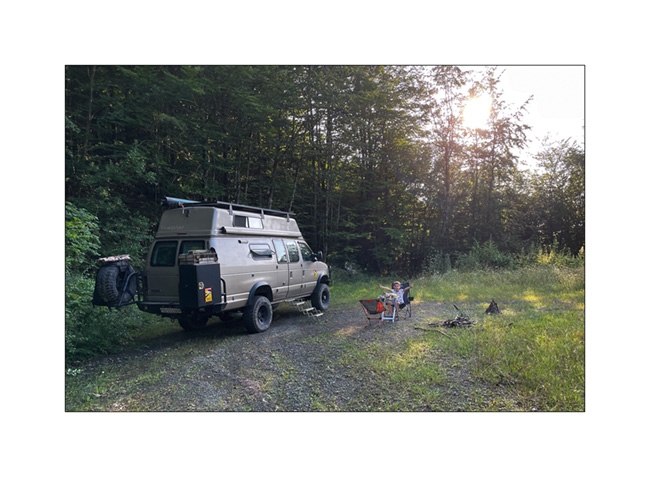
5. … and we make the first and last campfire of this vacation for our barbecue. While it has rained a lot here and the risk of wildfire is non-existent this evening, it won’t be the same later…

6. After reaching Andorra la Vella where we shop some groceries to fill the fridge, we decide to drive up to Pico Negro. The trail has become so busy that there is a guard of Guarda Civile who charges €25 at the start of the trail. As it’s already late afternoon, VLV climbs without stopping too much on a track in places very washed out by storms and reaches a first flat area at around 7,200 feet elevation. We don’t meet anyone there.
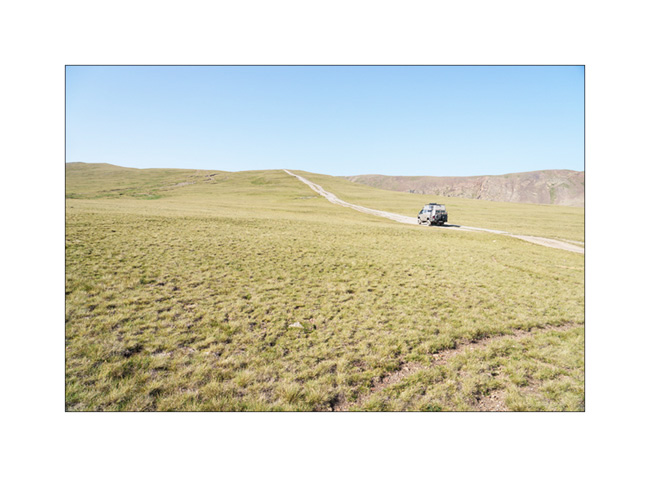
7. After approx. an hour’s drive, she arrives in sight of the summit, at about 8,900 feet above sea level.
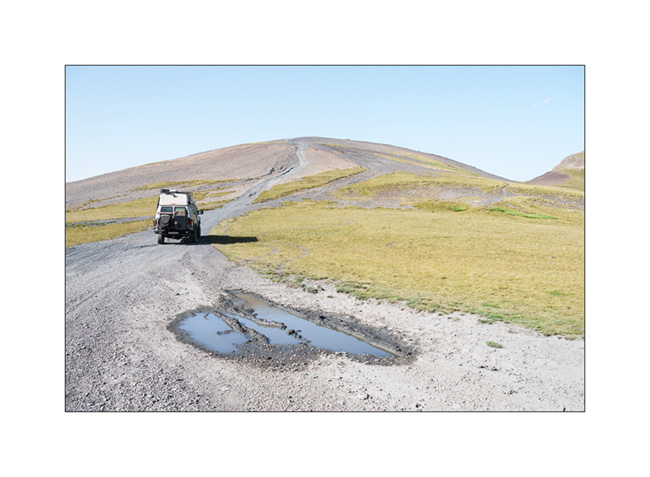
8. After the summit, we go further to the famous VW van carcass near which we spend the night.
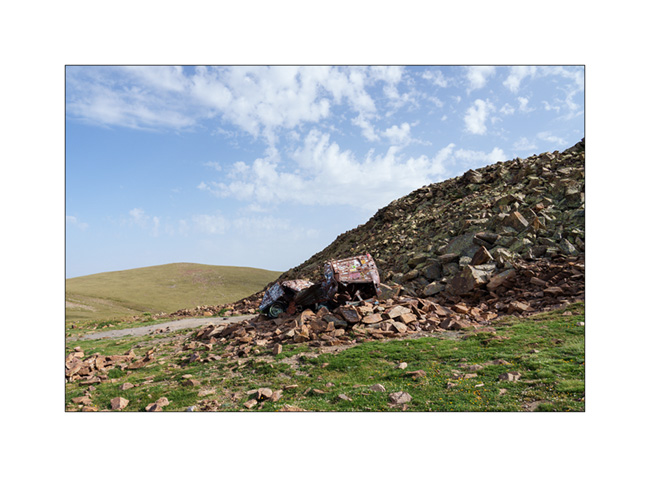
9. VLV at the camp…
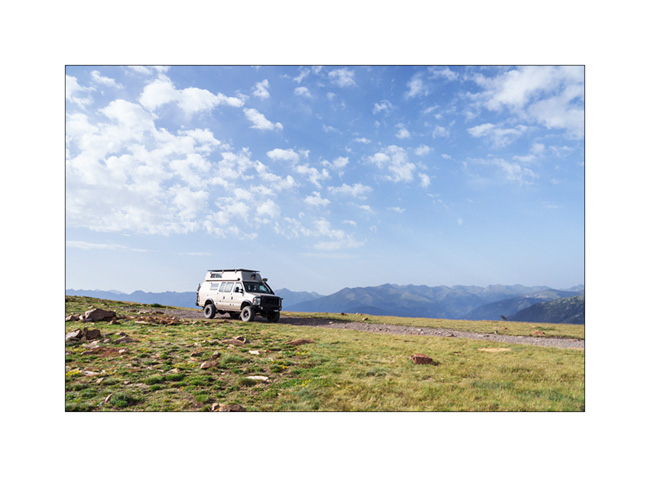
10. Climbing on the small summit overlooking it…
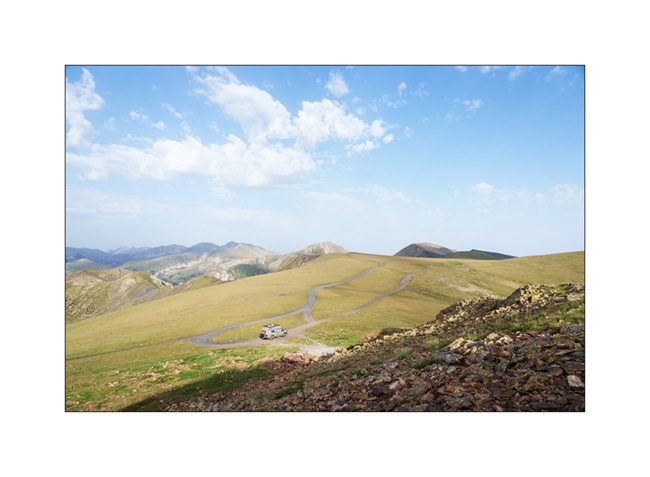
11. … to enjoy sunset.

12. Evening quietness…
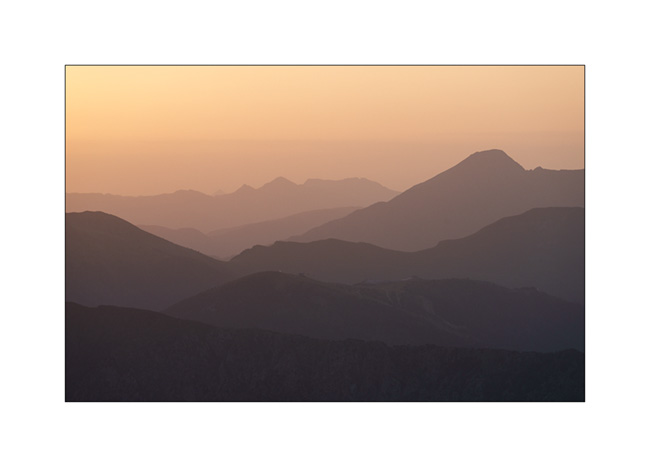
13. See you tomorrow sunshine !

14. Dusk…

See you soon for more! 😀
Forced stop and start of the Pyrenees mountains
Today, we continue the road towards the Pyrenees.
After about fourty miles, I take VivaLaVida on the A6 motorway north of Orange. I take its cruising speed – about 65 mph – and I don’t have done 3 miles that a thudding noise intensifies quickly. No doubt, something is wrong with the chassis. I slow down immediately and pull over to the emergency lane. We are less than one mile away from a rest area and I slowly let VLV flow until there at 25 mph. As I go out to try to identify the source of the problem, amazement: 4 of the 8 studs on the left rear wheel are broken, the nuts having obviously disappeared! I take out the 21 socket and see that the 4 remaining nuts are really loose. As I tighten them, a fifth stud breaks. We really almost lost a wheel and I dare not imagine what the consequences could have been, as much for VLV as for other motorway users with an crazy wheel of three feet in diameter and approx. 100 pounds launched at 65 mph..!
This wheel tightened again, we drag ourselves to the next motorway exit 3 miles further. We go to a truck workshop and order a set of 32 studs and 32 nuts from the United States since they are specific to VLV’s 4wd conversion. Chris will send them to us the next morning by Express mail and they will finally arrive on Friday at 4 pm. In the meantime, we reach the “Manon” campgroung in Orang, where we will spend these 5 days of waiting. The swimming pool and the nearby town will somewhat entertain the crew stopped in its trip..!
1. Dinner in the campground…
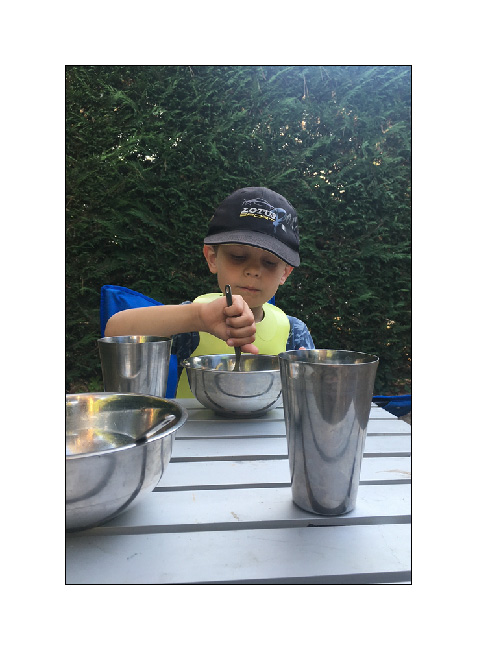
2. Small compensation. 😉
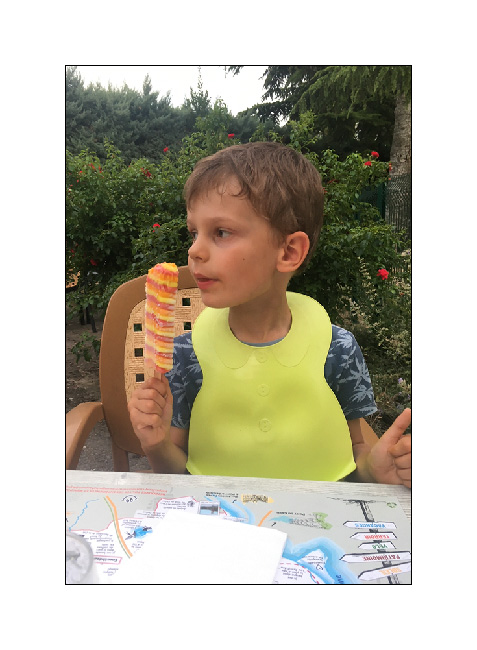
3. The famous Orange roman theater and its stands.
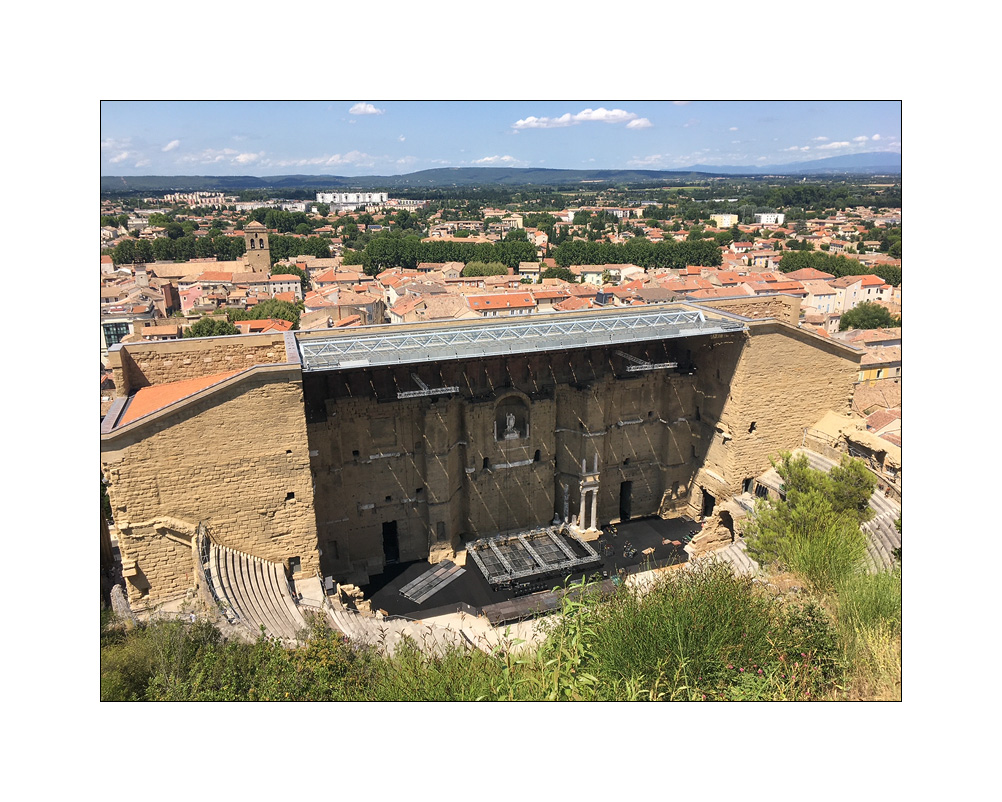
4. We enjoy the swimming pool.
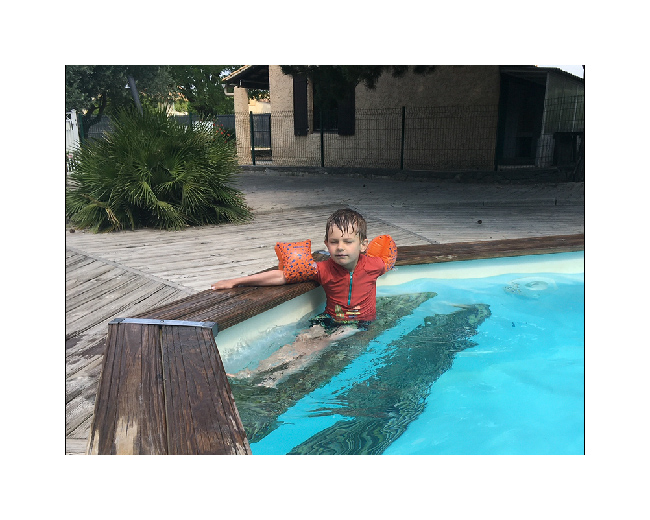
5. Distractions…
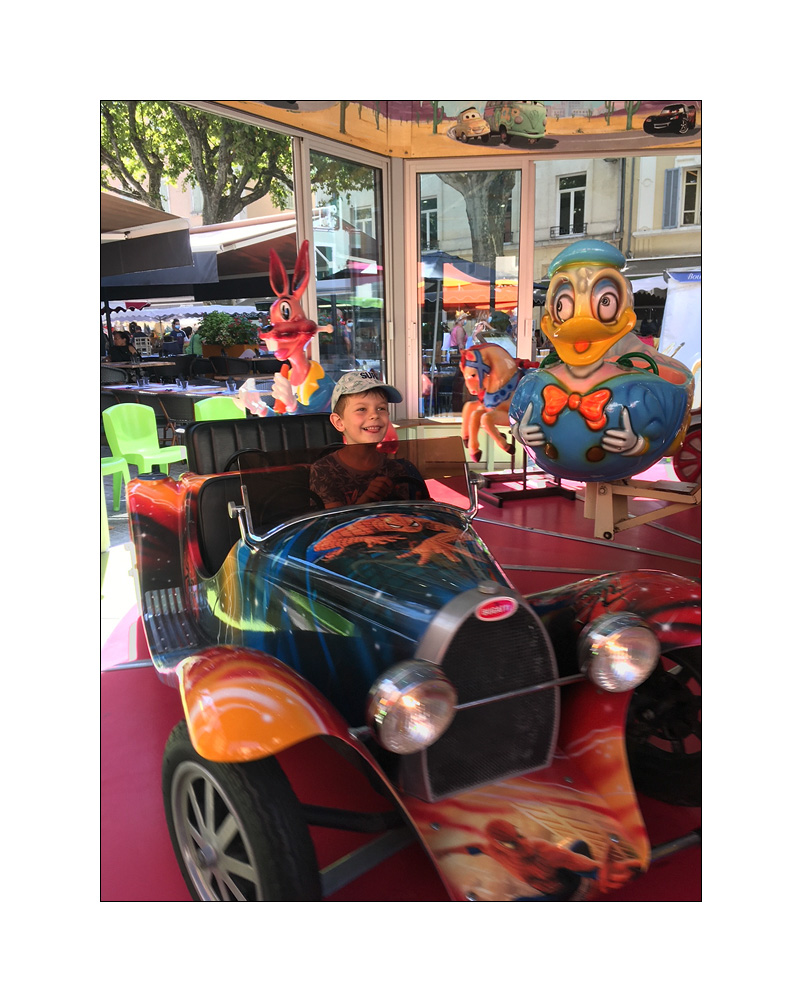
Once VivaLaVida has been repaired, we resume the trip to the Spanish Pyrenees. We get there at the end of the day on a Saturdayand it rains heavily. We stop at the trail that we will drive the next day when it is already almost dark.
6. Colored sunrise while Emile is still sleeping.
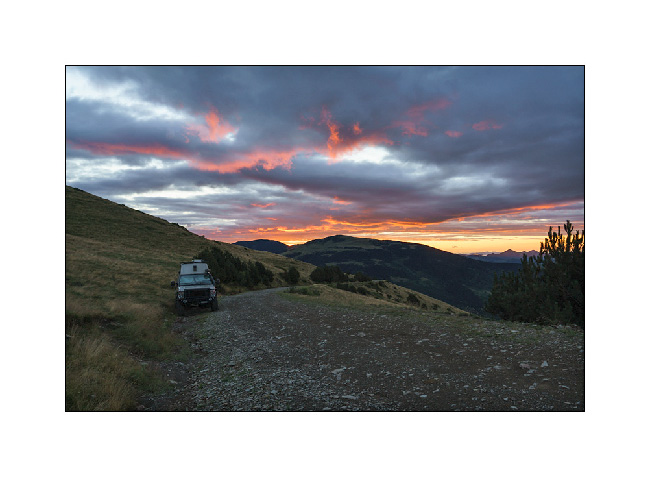
7. The trail which oscillates at about 6000 feet above sea level is gorgeous.
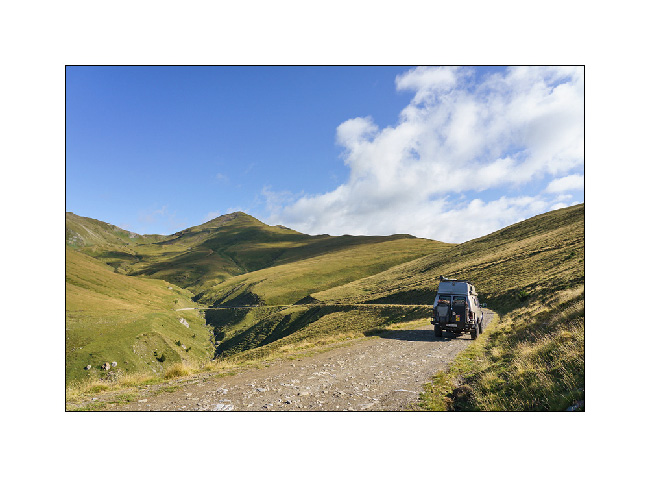
8. This is the opportunity to test the Isofix adapter that I made to install Emile’s seat in the front. He is in heaven! 😀
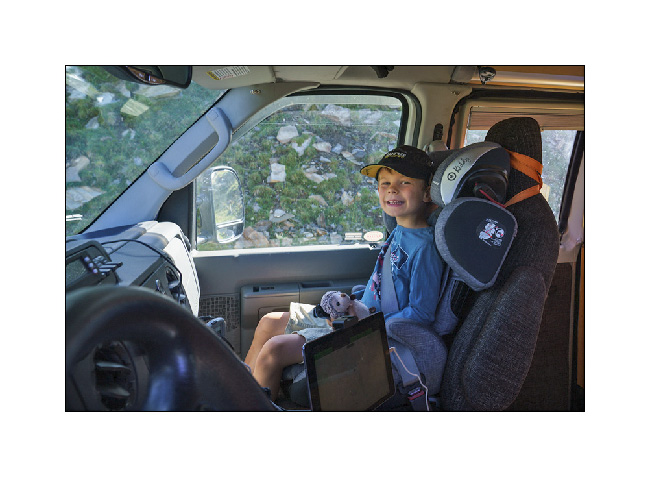
9. View of the plain, far South.
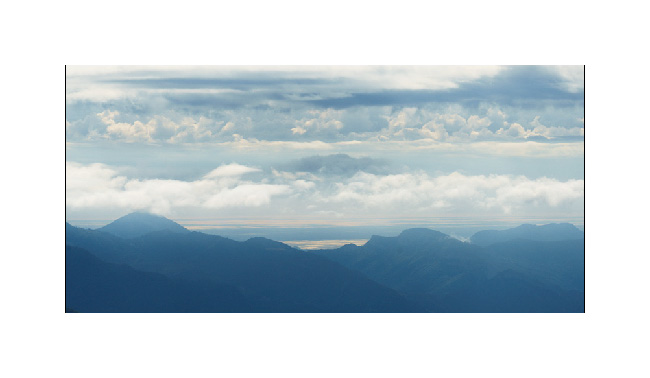
10. VLV is happy to be back on the trail.
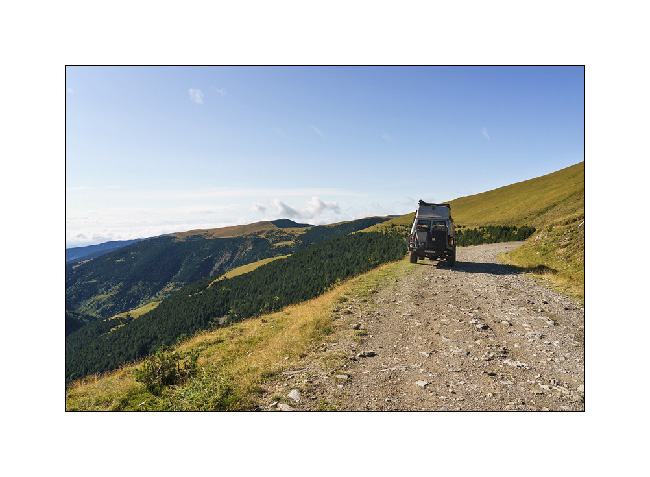
11. We discover pretty villages…
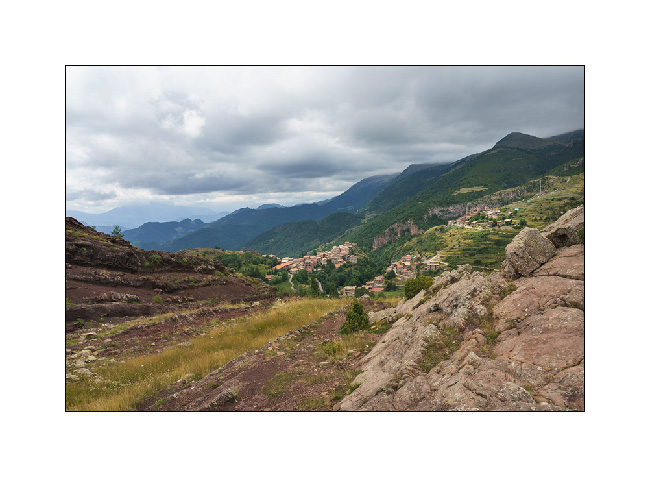
12. …and a varied geology.
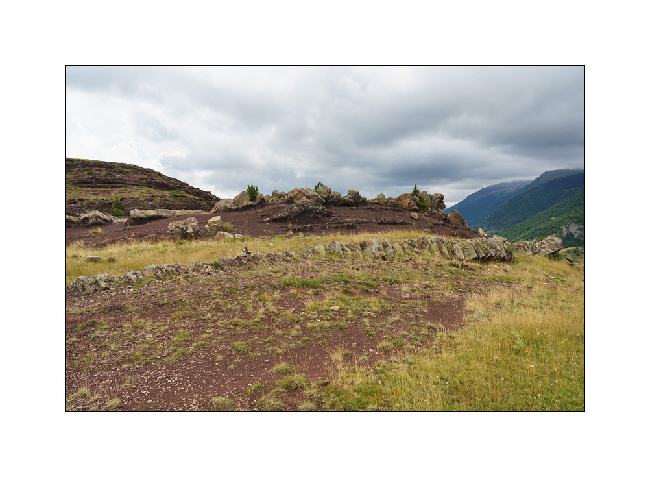
13. Another of these Pyrenean villages.
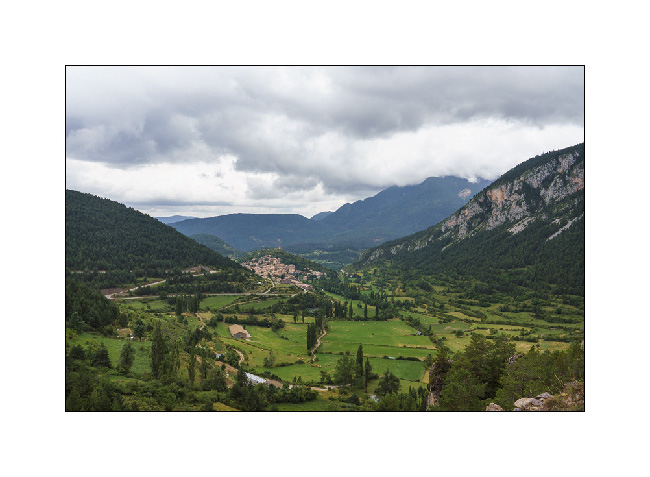
14. We reach a high plateau, the Pedró dels Quatre Batlles, after a climb where the 4×4 transmission have been very useful!
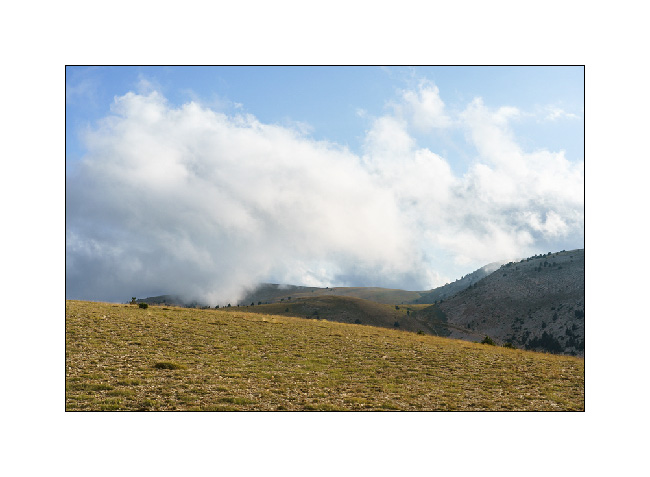
15. It blows a very strong wind. Is this why the vegetation takes the form of barkanes ?
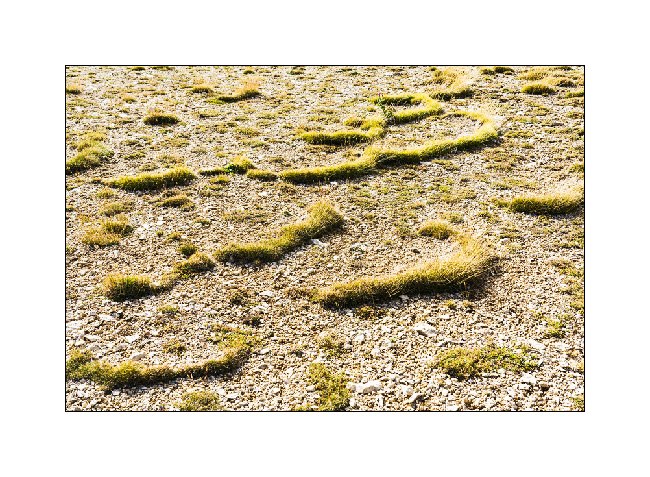
16. The mood is beautiful as the sun goes down.
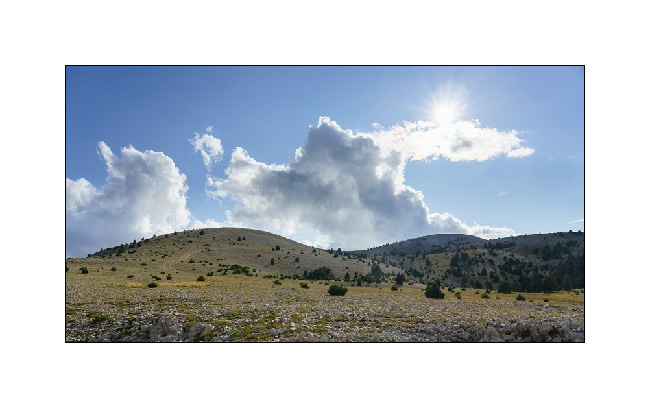
17. Last rays before sunset. The wind will shake us a good part of the night and it will only be 38 F in the morning.
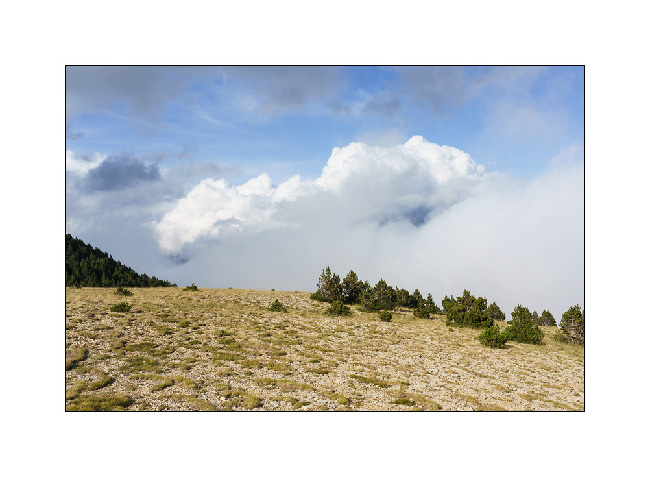
See you soon for the rest.

 D5 Creation
D5 Creation